It matters when it matters, and doesn't when it doesn't. That's not much of an answer, but that's the simple truth. It depends, and sometimes, it does in fact matter, and other times, it doesn't.
However, the resistors ARE different. Let's go on a small aside and discuss why resistors have the values they do. 220...680... 470... it all seems a little arbitrary, doesn't it?
They're actually determined by approximate geometric sequences called the E-series of preferred numbers.
They're a slight variation on the Renard series of preferred numbers. Basically, it's a series that subdivides a power of 10 into a certain number of steps, and any two adjacent steps have a roughly constant ratio.
Let's take 100, 120, 150, 180, 220, 270, 330, 390, 470, 560, 680, 820. Familiar numbers, right? Now, obviously we are rounding some digits off, but if you divide any of those numbers by the larger adjacent value, it will always be somewhere near 0.83. This sequence is specifically using a constant ratio that results in 12 numbers spanning a power of 10, or in other words, each power of 10 will be divided into 12 values.
What's the point of all this?
Error. Subdividing powers of 10 into these fixed ratio geometric sequences results in values that minimize relative error for any given value. So these values are chosen because they are always going to minimize how far off an arbitrary resistance value will be from the limited available values that are manufactured.
What does this have to do with your 200 vs 220 resistor question? Everything, actually. There are several E series, each one with different numbers of subdivisions. The roughest is E6 (with 6 divisions), then there is E12, E24, E48, E96, and even E192. These numbers of subdivisions are not chosen arbitrarily.
They match up to resistor tolerance. Adjacent E6 values require resistors of at least 20% tolerance or better for subdivisions of that granularity to matter. Above 20%, and two adjacent values will overlap due to the wide tolerance window, and then, as you say, they're "close enough" and the difference is not very meaningful anymore.
E12 corresponds to 10% resistor tolerance, and E24 to 5% resistor tolerance. 200 and 220 only appear starting at the E24 sequence. But, since virtually every resistor made is at least 5% tolerance, or often 1% (E96 correspondence), that means any two values that appear on the E24 sequence are meaningfully different and thus, the resistors are functionality different in a way that actually matters.
So, at least from the standpoint of the math, unless you have 10% tolerance resistors, 220Ω and 200Ω resistors are, in fact, not 'close enough'. The difference is real and measurable. Now, for many usage cases, you can definitely just plop in either of those resistors when a schematic calls for the other. There are also cases where you can't, or at least, doing so will result in something having 10% error (like, for example, the output of an adjustable voltage regulator. Given that most chips have a voltage range of ±5%, such a large error could be potentially destructive).
That said, I totally just have a drawer labeled '220Ω' that secretly has a bunch of different values somewhere between 200Ω and 220Ω. Then I do that thing everyone hates and actually figure out the resistor color code and pick the one I actually want.
As for SMD resistors, I never mix these in the same drawer/cubby/spot. 0402 won't even have any markings, and 0603+ often have weird markings that aren't any kind of resistance value, and include letters. Maybe it's hex? Cyrillic? I don't know. I try to avoid reading SMD part markings as much as I can.
You didn't ask, but I recommend these for through hole or larger component organization. You can use a label maker to label them, and they have 64 drawers per unit.
As for SMD components, I will put different sizes but the same value (so 0805, 0603, 0402 1K resistors would all get lumped together), and I use a couple of these 144 cubbies of organizational excellence. The multiple of 6 numbers make them perfectly suited for E Series values too!

They are seriously life changing. LIFE CHANGING. I love mine. I think there are also some clones of it that are a bit cheaper, but I've simply linked the brand I have (and thus can personally vouch for).

